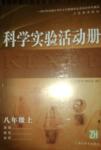题目内容
Perhaps the most famous theory, the study of body movement, was suggested by Professor Ray Birdwhistell. He believes that physical appearance is often culturally programmed. In other words, we learn our looks—we are not born with them. A baby has generally informed face features. A baby, according to Birdwhistell, learns where to set the eyebrows by looking at those around-family and friends. This helps explain why the people of some areas of the United States look so much alike, new Englanders or Southerners have certain common face features that cannot be explained by genetics(遗传学). The exact shape of the mouth is not set at birth, it is learned after. In fact, the final mouth shape is not formed until well after new teeth are set. For many, this can be well into grown-ups. A husband and wife together for a long time often come to look alike. We learn our looks from those around us. This is perhaps why in a single country area where people smile more than those in other areas. In the United States, for example, the South is the part of the country where the people smile most frequently. In New England they smile less, and in the western part of New York State still less. Many southerners find cities such as New York cold and unfriendly, partly because people on Madison Avenue smile less than people on Peachtree Street in Atlanta. Georgia. People in Atlanta, Georgia. People in largely populated areas also smile and greet each other in public less than people in small towns do.
1. Ray Birdwhistell believes that physical appearance _______.
A. has little to do with culture
B. has much to do with culture
C. is ever changing
D. is different from place to place
2. According to the passage, the final mouth shape is formed _______.
A. before birth B. as soon as one’s teeth are newly set
C. sometime after new teeth are set D. around 15 years old
3. Ray Birdwhistell can tell what area of the United States a person is from by _______.
A. how much he or she laughs B. how he or she raises his or her eyebrows
C. what he or she likes best D. the way he or she talks
4. This passage might have been taken out of a book dealing with ________.
A. physics B. chemistry C. biology D. none of the above
1--4 BCAD
解析:
本文介绍了人的面目不是生来注定,而是后天习得的理论。
1. B。细节题。根据文章第2句physical appearance is often culturally programmed可推知此题答案为B。
2. C。细节题。根据文章中间的句子the final mouth shape is not formed until well after new teeth are set可推知此题答案为 C。
3. A。推断题。根据文章末尾部分对各个地方人笑的多少的归纳可推知此题答案为A。
4. D。推断题。根据文章的内容与选项的比较,发现选项A、B、C与文章内容毫无关系,从而可推知此题答案为D。

 科学实验活动册系列答案
科学实验活动册系列答案